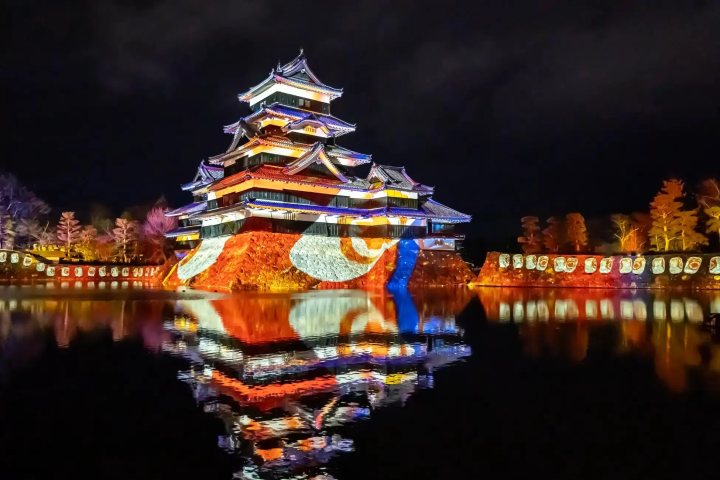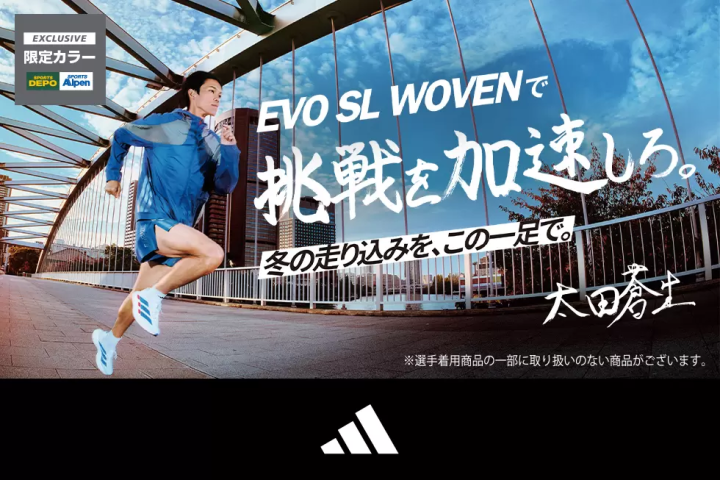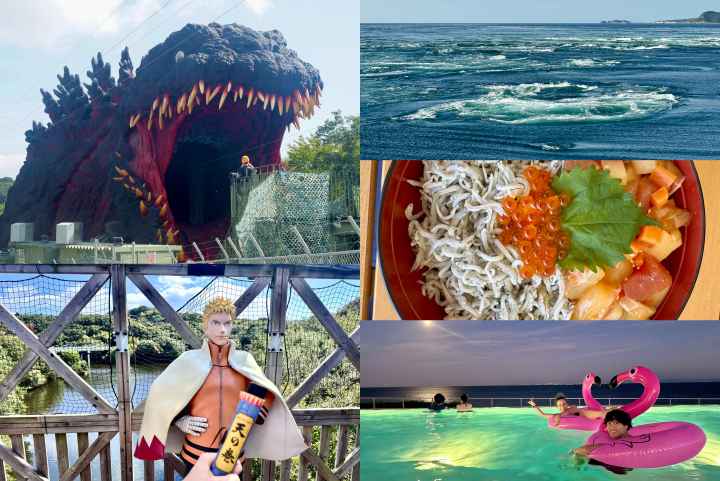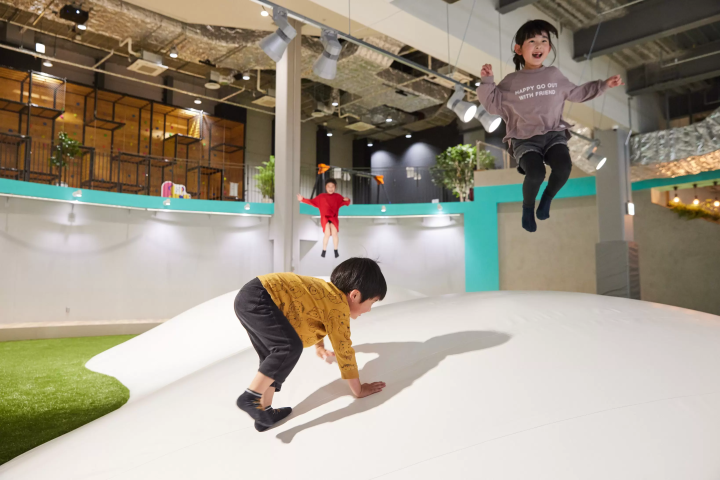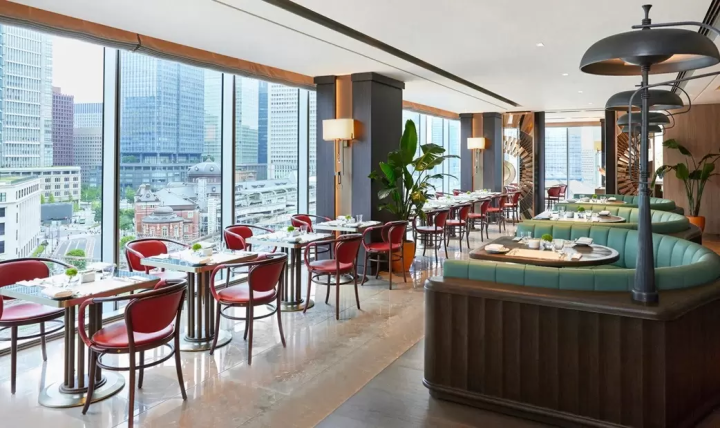Scenery, History, and Food! A 3-Day Bicycle Tour in Yamaguchi, Hiroshima, and Okayama!

Yamaguchi is famous for its karst plateau. In Hiroshima, there is a small town with a nostalgic atmosphere, while Jeans Street in Okayama exhibits its own style. This article features a 3-day tour of these prefectures, including spectacular views, history, and local food.
This article introduces a 3-day bicycle tour of Yamaguchi, Hiroshima, and Okayama prefectures in the western part of Honshu (Japan's main island). There are spectacular views, historical spots, and delicious local food to enjoy along the way. For bicycle enthusiasts, this trip should create a long-lasting memory.
The items and admission fees in the following article reflect the particular time of MATCHA's visit. Please note that they are subject to change.
First Day: Yamaguchi Prefecture
9:00 Yuda Onsen/Yamaguchi City Saikoutei

According to legends, Yuda Onsen (hot spring), which produces over 2,000 tons of hot water per day, was discovered by a white fox. Since the spring quality is alkaline, it possesses skin-beautifying properties.
A huge statue of the fox stands by Yudaonsen Station, making it a perfect spot to take photos. There is ashiyu (foot bath) in the station and around the area, allowing cyclists to rest their weary muscles.

Yamaguchi City Saikoutei, a 20-minute bicycle ride from Yuda Onsen, used to be a high-class Japanese restaurant built in 1877. After relocating to the present site, the building was restored and has become a prominent sightseeing spot in Yamaguchi City. The calligraphy decorating the interior, written by famous politicians such as Ito Hirobumi, alongside rare pottery, chinaware, and lacquerware are all cultural assets.
In autumn, tourists flock to Saikoutei to enjoy the colorful foliage. The building also offers tea services and kimono fittings. Wearing a kimono, browsing the area, and taking in the local air might be fun.
The next stop is Yasutomiya, near Akiyoshido, about two and a half hours away by bicycle.
Admission Fee
Adults (High school students and up): 100 yen
Children (Junior high and elementary school students): 50 yen
Kimono Fitting
3,000 yen (Under 2 hours)/3,800 yen (Over 2 hours)
12:30 Yasutomiya

This store, located at the entrance of Akiyoshido, handles souvenirs and craftworks. The restaurant next door serves various tasty dishes cooked from local ingredients.
Mine City, where Akiyoshidai is located, produces Mito gobo (burdock root). The gobo-men, a fragrant dish topped with crisply fried Mito gobo, offers a variety of textures. There are many Yamaguchi products in the store, so this would also be an ideal time to shop.
After lunch, it is a 5-minute walk to Akiyoshido.
Gobo-men: 900 yen
13:30 Akiyoshido Cave

Akiyoshido, one of the prominent limestone caves in Japan, has a mystical air and is designated as a special natural monument by the government. The cave temperature is 17 degrees Celsius year-round. It is cool during the summer while warm in winter.
Popular spots inside the cave, such as hyakumai-zara (100 plates) and kogane-bashira (golden column), are truly breathtaking. They are works of art created by nature.
The next stop, Akiyoshidai Karst Observatory, is 20 minutes away by bike.
Admission Fee
Adults and High School Students: 1,300 yen
Junior High School Students: 1,050 yen
Elementary School Students: 700 yen
14:30 Akiyoshidai Karst Observatory
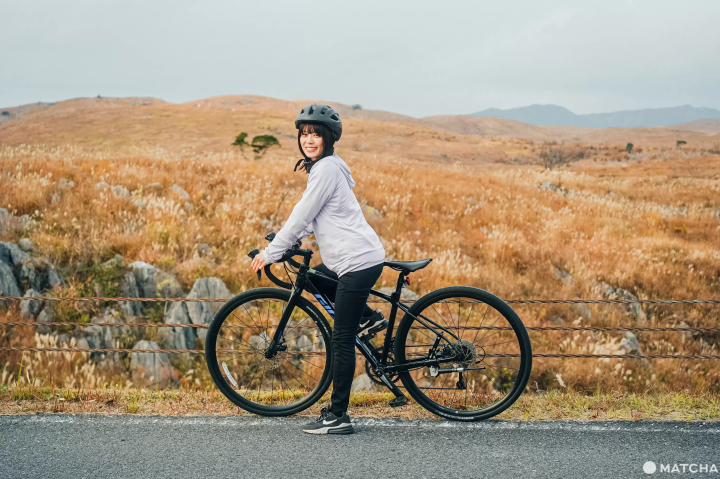
Akiyoshidai is the largest limestone plateau in Japan. This area is both a national park and a special natural monument. Plus, it's an ideal spot to go hiking. The plateau is also a popular wedding photo spot.
Those interested in enjoying the panorama should visit the Akiyoshidai Karst Observatory. There is a free rest space and a cafe at Karstar (Mine Akiyoshidai Geopark Center), next to the observatory.
After taking in the grand view, it is a 30-minute bicycle ride to Beppu Benten Pond, the next stop.
15:30 Beppu Benten Pond

Picture courtesy of Yamaguchi Prefecture
This pond is famous for its transparency.
It is about 4 meters deep, with a mystical cobalt blue color. The bottom of the pond is visible on clear days, with the water resembling a crystal. It is said that the pond water helps longevity, so many Japanese tourists fill their bottles with it.
From the magical pond, it is a 2-hour bicycle ride to Shin-Yamaguchi Station. Take the train to Onomichi Station in Hiroshima Prefecture and spend the night in the area.
Second Day: Hiroshima Prefecture
8:00 JR Onomichi Station

Shimanami Kaido is a famous cycling route that connects Onomichi (Hiroshima) and Imabari (Ehime).
Since Onomichi is easily accessible, many cycling enthusiasts choose JR Onomichi Station as their starting point. The parking and assembling lot for bicycles, located next to the station, is open to cyclists.
From the station, it is a 5-minute walk to Fukumoto Ferry.
8:10 Fukumoto Ferry (Onomichi Station to Tomihama, Mukaishima)

Fukumoto Ferry runs between Onomichi and Mukaishima, transporting passengers, bicycles, and cars. It is a convenient system, not only for cycling tourists but for locals as well. From Onomichi, it takes about 5 minutes to Tomihama in Mukaishima.
From the ferry terminal, it is a 5-minute bicycle ride to Goto Mineral Springs.
Fare
Adults: 60 yen/Children: 30 yen/Bicycles: 10 yen
8:30 Goto Mineral Springs

Picture courtesy of Goto Mineral Springs
Goto Mineral Springs, established in 1930, is one of the important hydration points along the cycling route.
The beverage maker's store is designed in the 60s style. The popular Marugo Cider has a refreshing, smooth taste with just the right sweetness.
There are also seasonal products, such as tomato cider and green lemon cider. Alongside the tasty drinks, the store interior and bottles have a nostalgic air, prompting visitors to take photos. It should be an interesting shot!
After quenching your thirst, it is a 30-minute bicycle ride to Mt. Takami Observatory.
Marugo Cider: 310 yen
10:00 Mt. Takami Observatory

Picture courtesy of Hiroshima Tourism Association
This observatory is located on Mt. Takami, the highest mountain on Mukaishima. Since there is nothing blocking the view, visitors can see the islands in the Seto Inland Sea, along with the sunrise and sunset.
In spring, the cherry blossoms on both sides of the climbing route color the mountain in pink. This is a popular spot to view the flowers among locals.
From the observatory, it is a 20-minute ride to Willows Nursery.
11:30 Willows Nursery

This Hawaiian cafe located at Tachibana Beach serves pancakes, coffee, and lemonade.
The most popular dish is the Spam Pork Hamburger. The salty spam, mixed with not-too-sweet pancakes, creates an array of flavors.
The Milk Butter Pancake has a deep, thick fragrance. Purple Lemonade, made with butterfly pea and locally produced lemon, has a vivid color, with a slightly tangy taste. It is a popular drink among ladies.
After the pancakes, it is a 40-minute bicycle ride to Uta Port.
Spam Pork Hamburger: 850 yen/Milk Butter Pancake: 750 yen/Purple Lemonade: 450 yen
13:00 Utado Ferry (Uta Port to Tosaki Port)

Utado Ferry connects Uta Port (Mukaishima) and Tosaki Port (Urasaki Town), transporting travelers, bicycles, motorbikes, and cars. It is an important system for locals.
There is a button to call the ferry at the opposite bank, regardless of the number of people waiting. This is truly a passenger-friendly service.
From Tosaki Port, it is a 90-minute bicycle ride on the Shiomachi Kaido (Fukuyama Cycling Road) to Tomonoura.
Fare
Adults: 180 yen/Adults on bicycles: 210 yen/Children (Elementary school students): 90 yen/Children on bicycles: 120 yen
15:00 Tomonoura

Tomonoura in Fukuyama City thrived as a port town, and was even featured in a movie. The alley where buildings from the Edo Period are lined up has become a popular spot for tourists.

Jyoyato (night light), built in 1859, is one of the symbols of Tomonoura. It used to guide vessels at night, and played an important role in their safety.
This structure, including the base sunken in the water, is over 10 meters in height. It is one of the largest structures built in the Edo Period that still remains. It has also become one of the places of interest in the Seto Inland Sea.
After taking in the scenery, it is a 2-minute walk to Shionone Tomonoura Daifuku.
15:30 Shionone Tomonoura Daifuku

This store specializes in daifuku (glutinous rice cake stuffed with sweet bean paste) using local ingredients.
Sea salt, made in the Seto Inland Sea, is added to their shio-mame daifuku. The salt combined in the bean paste creates a unique, sweet and salty taste.

Tomonoura Parfait, made with blue jelly and white almond tofu, is created in the image of the beautiful beaches and blue sky of the town. This photogenic confection is popular among many influencers.
Fukuzen-ji Temple Taichoroi, the next stop, is 2 minutes away on foot from Shionone Tomonoura Daifuku.
Shio-mame Daifuku: 350 yen/Tomonoura Parfait: 680 yen
16:00 Fukuzen-ji Temple Taichoro

Fukuzen-ji, a Buddhist temple of the Shingon sect, is located in a place with a view of Sensui-jima and Benten-jima islands. Taichoro is the guest hall of the temple, built around 1690. During the Edo Period, it was used for the reception of the Korean Envoy.
The ambassadors were delighted with the view, stating that it was the most attractive scenery in Japan. The view from the hall is also used in the opening of a popular anime.
From Fukuzen-ji, it is an hour bicycle ride to Fukuyama Station. Take the train to Kurashiki Station in Okayama Prefecture, and spend the night in the area.
Admission Fee
Adults: 200 yen/High school and junior high school students: 150 yen/Elementary school students: 100 yen
Third Day: Okayama Prefecture
8:00 Kurashiki Bikan Historical Quarter
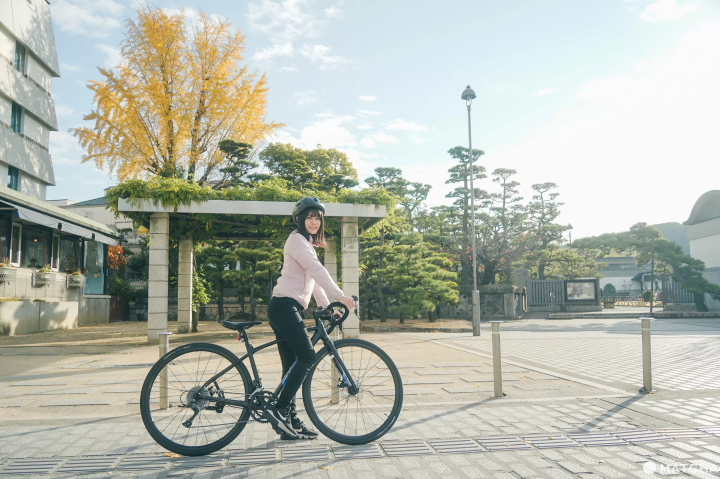
From Kurashiki Station, it is a 5-minute bicycle ride to the Bikan Historical Area. Verdant willow trees and buildings with white walls and stone tiles are lined up along the river. The area has a traditional Japanese atmosphere, which is rarely seen these days.

There are stylish stores handling canvas items and jeans, along with cafes inside renovated traditional townhouses. Cultural facilities such as the Ohara Museum of Art and Kurashiki Ivy Square, are also located in this area. This is a place where visitors can have fun all day.
From here, it is an hour and 20-minute bicycle ride to Kojima Jeans Street.
10:30 Kojima Jeans Street

The main industry of Kojima was cotton-growing, which inspired textile productions, and the area became the birthplace of domestic denim.
The symbol of the area is Kojima Jeans Street, which stretches for about 400 meters. With over 30 stores handling denim, it is a mecca for jeans enthusiasts.
Denim can be seen everywhere in the street. There are drawings at restrooms and rest spaces, on manholes, and even on vending machines.
This is the perfect spot to take a photograph commemorating the trip.
After shopping along Kojima Jeans Street, it is a 7-minute bicycle ride to Okonomiya.
11:30 Okonomiya

The Shimotsui district in Kojima is famous for producing tako (octopus), called Shimotsui-dako. Given its firm texture, it is one of the popular appetizers for locals having an alcoholic drink.
Okonomiya, the famous okonomiyaki (Japanese pancake) restaurant, serves tako-shio yakisoba (stir-fried noodles with octopus). The boiled octopus is diced, seasoned with pepper and salt, grilled, then mixed and fried with the noodles.
The octopus is fresh and fragrant, and the voluminous dish will be gone in an instant.
Tako-shio Yakisoba: 990 yen
14:00 Uno Port

"Chinu-the Black Sea Bream of Uno" (2010) by Yodogawa Technique
Many artworks are displayed at Uno Port, which has become a mecca for art enthusiasts.
"Chinu" is one of these works. Made from debris floating at Uno Port and Lake Kojima, it was first displayed during the Setouchi Triennale 2010.
Yodogawa Technique, the artist, repairs the damaged parts before the art festival, which is held every 3 years. There is a slide inside "Kochinu," a neighboring work of art, making it popular among children.
From Uno Port, it is a 2 hour bicycle ride to Kurashiki Station.
Yamaguchi, Hiroshima, and Okayama: The Place to Enjoy Cycling in Japan
If you are a bicycle enthusiast and interested in fine food and history, visit the three prefectures above, which are all blessed with nature.
Sponsored by the Cycling Tourism Promotion Committee, Chugoku Region Governors' Association
Author: Chu
MATCHA's promotional account for corporate and local government advertising. We aim to provide useful information to our readers in an enjoyable manner.


































